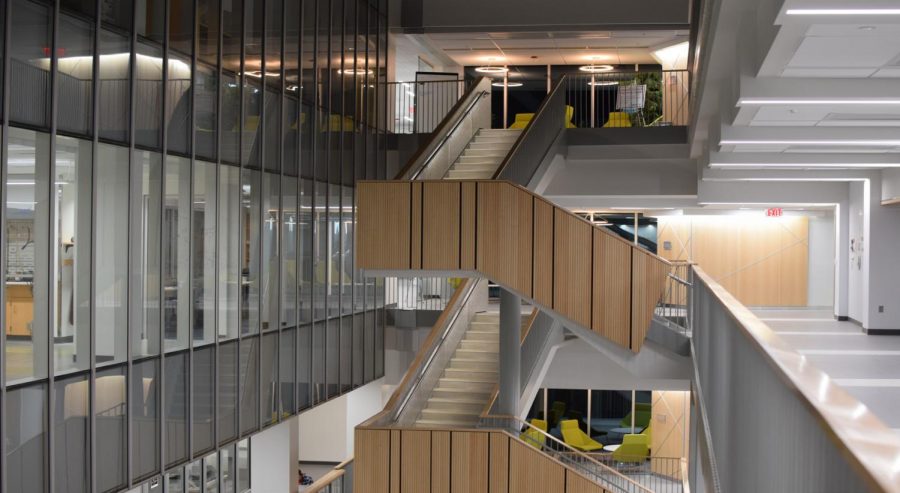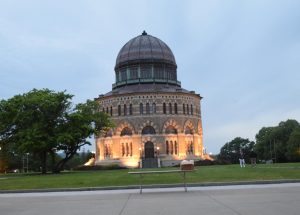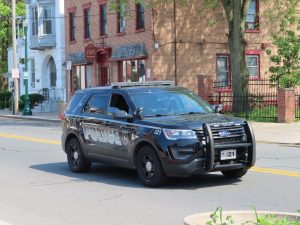ISEC construction recap, updates and completion date
October 25, 2019
The Integrated Science and Engineering Center (ISEC) is nearing the end of its completion. It was kicked off with a planned price tag of $100 million in 2017 and the project was intended to consist of the renovation of the three sections of the older Science and Engineering Center (S&E) which was built for the Union College community in the 1960s and was dedicated in 1971.
At the time of the announcement of ISEC, the plan coincided with the University of Albany bolstering its engineering programs, being in the process of securing funding for a $60 million project to make the former Albany High School a new home for its College of Engineering and Applied Sciences, and also coincided with colleges in the Capital District dealing with declines in enrollment. ISEC was dedicated on October 12 last year.
One of ISEC’s defining architectural qualities is its glass and steel makeup. It also features classrooms described by Union College’s websites as “bright, airy” and “open and inspiring.” It provides a departure from the environment of the old Science and Engineering Center by putting space for research next to space for analysis, emphasizing more free movement.
It has been predicted that when everything is done, the project will be 142,000 square feet and connect directly to the Peter Irving Wold Science and Engineering Center, Bailey Hall, Butterfield Hall and Steinmetz Hall. The development is also meant to increase foot traffic.
Loren Rucinski, Director of Facilities and Planning for Union College, gave comments on the differences between maintaining ISEC and keeping care of other buildings on campus. “The biggest difference for the cleaners,” she says, “is that there is a lot of glass in the building which requires more attention. And unfortunately having a finished occupied space right next to a construction area has been more of a challenge for both us and the faculty.”
In considering the initial plan for the construction of the center, the committee of faculty and school administrators were in charge of weighing conflicting options: whether to develop a totally new complex or fully renovate the existing Science and Engineering Center.
Instead of choosing one option over the other, the final decision was made to do some of both, and to do so in phases.
Rucinski says that the school’s facilities workers are “about to complete Phase Three of the project and will be moving into the renovated space in the beginning of December.”
Rucinski also says that the scheduled time for moving into the renovated space was extended, due to the additional time that was needed to demolish the interior of the three towers of the old Science and Engineering Center.
“Those towers will be demolished over the winter months.” says Rucinski, “and then the final site work, grading, walkways and landscaping will be worked on through the spring and finished in the summer.”







